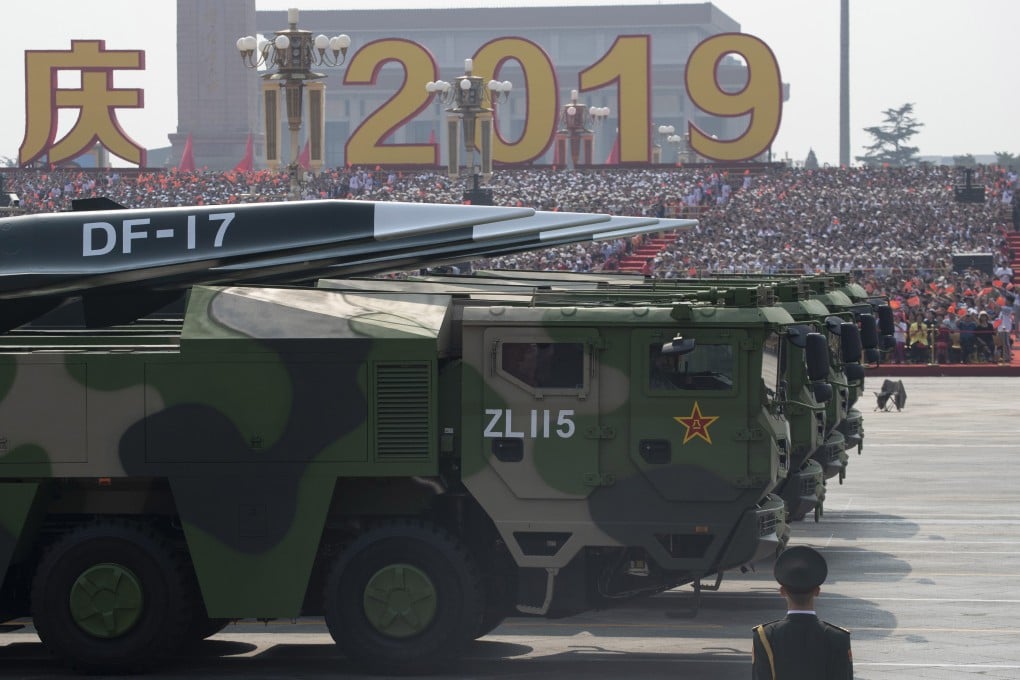Advertisement
Opinion | China’s military is building up its advanced weaponry, and the US certainly will, too
- The formidable arsenal on display at China’s 70th anniversary parade announces to the world its ambition – backed by hefty investment – to be a global leader in futuristic weapons technology. The US, which has already torn up its nuclear weapons treaty with Russia, won’t be far behind
Reading Time:3 minutes
Why you can trust SCMP

America has had a definitive military edge on China for the entire modern history of their bilateral relationship, commencing in 1979. It has been a pioneer in developing cutting-edge weapons systems, and remains a leader in that regard, with futuristic weapons such as the F-35 Lightning II fighter and the Tactical High Power Microwave Operational Responder system – designed to protect military bases against swarms of drones – now in its formidable arsenal.
The impressive display of China’s weaponry on October 1 appears to have changed all that. Now, Beijing has proved that it has some highly sophisticated weapons of its own.
During the 70th anniversary parade celebrating the birth of the People’s Republic of China, Beijing’s display of firepower was evidence of the emergence of a new “strategic triad” of weaponry. The existing nuclear triad of land-based bombers, intercontinental cruise missiles and ballistic-missile submarines is in the process of being replaced by stealthy drones, hypersonic cruise missiles and special forces using advanced helicopters and small high-speed boats.
Advertisement
It is clear that Beijing has invested a lot of money and resources and made some impressive achievements towards joining the ranks of global leaders in hypersonic weapons technology.
China’s hypersonic cruise missiles can fly 10 times faster than conventional cruise missiles. The DF-41 (Dongfeng-41) intercontinental ballistic missile is believed to be the most powerful missile in the world, with a range of up to 15,000km (further than any other missile) and capable of carrying 10 independently targeted nuclear weapons. Each warhead has yields of about 150 kilotons (equivalent to 150,000 tons of TNT). At 25 times the speed of sound, it would take only 30 minutes from launch to reach the US.
Advertisement
Advertisement
Select Voice
Choose your listening speed
Get through articles 2x faster
1.25x
250 WPM
Slow
Average
Fast
1.25x
